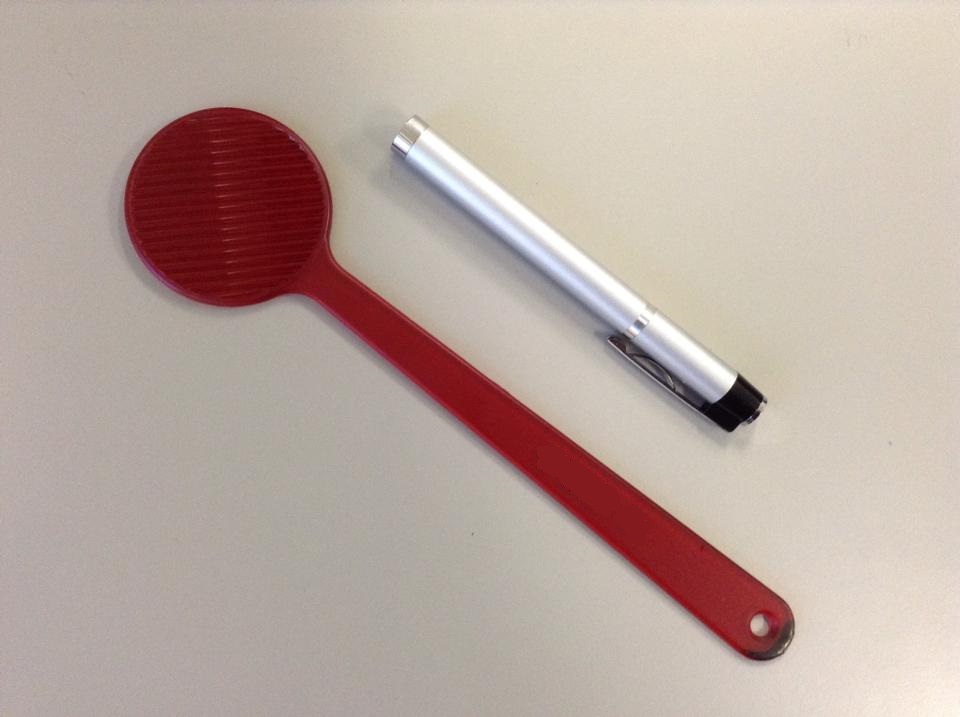Ernest Maddox on:
[Wikipedia]
[Google]
[Amazon]
Ernest Edmund Maddox (1863 – 4 November 1933) was a British surgeon and ophthalmologist. He was a specialist in abnormal binocular vision and phorias (

heterophoria
Heterophoria is an eye condition in which the directions that the eyes are pointing at rest position, when ''not'' performing binocular fusion, are not the same as each other, or, "not straight". This condition can be esophoria, where the eyes ten ...
in particular). He made advances in optical treatments and invented several devices to better investigate eye conditions, including Maddox rod
The Maddox rod test can be used to subjectively detect and measure a latent, manifest, horizontal or vertical strabismus for near and distance. The test is based on the principle of diplopic projection. Dissociation of the deviation is brought abo ...
, double prism Maddox, red glass Maddox, Maddox cross and Maddox wing
The Maddox Wing is an instrument utilized by ophthalmology, ophthalmologists, orthoptics, orthoptists and optometry, optometrists in the measurement of strabismus (misalignment of the eyes; commonly referred to as a ''squint'' or ''lazy eye'' by t ...
. As a keen amateur astronomer he also invented the starfinder, a device to home in on stars and constellations.


Life
He was born inShipton-under-Wychwood
Shipton-under-Wychwood is an English village and civil parish in the Evenlode valley about north of Burford, Oxfordshire. The village is one of three named after the ancient forest of Wychwood. The others are Milton-under-Wychwood immediately ...
, the son of J. F. Maddox.
He was educated at Mill Hill School
Mill Hill School is a 13–18 mixed independent, day and boarding school in Mill Hill, London, England that was established in 1807. It is a member of the Headmasters' and Headmistresses' Conference.
History
A committee of Nonconformist me ...
then studied medicine at the University of Edinburgh
The University of Edinburgh ( sco, University o Edinburgh, gd, Oilthigh Dhùn Èideann; abbreviated as ''Edin.'' in post-nominals) is a public research university based in Edinburgh, Scotland. Granted a royal charter by King James VI in 15 ...
, graduating with an MB CM in 1882 and gaining his doctorate (MD) in 1889. In 1894 he was elected a fellow of the Royal College of Surgeons of Edinburgh
The Royal College of Surgeons of Edinburgh (RCSEd) is a professional organisation of surgeons. The College has seven active faculties, covering a broad spectrum of surgical, dental, and other medical practices. Its main campus is located on ...
. He worked for a decade in Edinburgh alongside Dr Argyll Robertson.
In the 1890s he was living at 7 Manor Place in Edinburgh
Edinburgh ( ; gd, Dùn Èideann ) is the capital city of Scotland and one of its 32 Council areas of Scotland, council areas. Historically part of the county of Midlothian (interchangeably Edinburghshire before 1921), it is located in Lothian ...
's West End. His neighbour was the lighthouse engineer, Charles Alexander Stevenson
Charles Alexander Stevenson MICE MIEE FRSE (23 December 1855, – 9 May 1950) was a Scottish lighthouse engineer who built twenty-three lighthouses in and around Scotland.
Life
He was born at 8 Forth Street in the east part of Edinburgh's N ...
. In 1899 he won the British Medical Association's Middlemore Prize for services to ophthalmology
Ophthalmology ( ) is a surgical subspecialty within medicine that deals with the diagnosis and treatment of eye disorders.
An ophthalmologist is a physician who undergoes subspecialty training in medical and surgical eye care. Following a medic ...
.
Due to ill-health he headed for the warmer climates of the English coast and moved to Bournemouth
Bournemouth () is a coastal resort town in the Bournemouth, Christchurch and Poole council area of Dorset, England. At the 2011 census, the town had a population of 183,491, making it the largest town in Dorset. It is situated on the Southern ...
to work at first the Royal Victoria Hospital with Dr Roberts-Thomson, then the Royal Boscombe and West Hants Hospital. He served as vice-president of the Ophthalmological Society of the United Kingdom and president of the ophthalmological section of the British Medical Association
The British Medical Association (BMA) is a registered trade union for doctors in the United Kingdom. The association does not regulate or certify doctors, a responsibility which lies with the General Medical Council. The association's headquar ...
.
He died on 4 November 1933 in Bournemouth
Bournemouth () is a coastal resort town in the Bournemouth, Christchurch and Poole council area of Dorset, England. At the 2011 census, the town had a population of 183,491, making it the largest town in Dorset. It is situated on the Southern ...
.
Publications
* ''Accommodation and Convergence of the Eyes'' (1882) * ''Tests and Studies of the Ocular Muscles'' (1898) * ''Golden Rules of Refraction'' (1900) * ''Clinical Use of Prisms and the Decentering of Lenses'' (1908)Family
In 1893 he married Grace Rivers daughter of Alexander Monteath of Broich and Duchally inPerthshire
Perthshire (locally: ; gd, Siorrachd Pheairt), officially the County of Perth, is a historic county and registration county in central Scotland. Geographically it extends from Strathmore in the east, to the Pass of Drumochter in the north, ...
, who bore him thirteen children.
His daughter Mary Maddox is generally recognised as the world's first orthoptist.
References
{{DEFAULTSORT:Maddox, Ernest Edmund 1863 births 1933 deaths People educated at Mill Hill School British ophthalmologists English medical writers